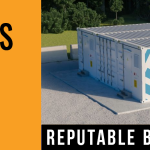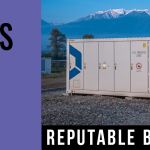 While a great number of blockchain endeavors in the solar arena focus on already established power generation systems and distribution networks, only a handful of projects so far look to both optimize and expand the market by engaging new investors.
While a great number of blockchain endeavors in the solar arena focus on already established power generation systems and distribution networks, only a handful of projects so far look to both optimize and expand the market by engaging new investors.
Russian blockchain project Solar DAO is enabling people with budgets as modest as $1 to become co-owners of solar projects. It is based on a crowdfunding model, which allows users to finance the construction of solar PV plants around the world, circumventing technical and other barriers.
With an established project pipeline, Solar DAO is now looking to solidify its foothold in the solar market through a partnership with Estonian blockchain project Powerchain, a decentralized network for energy storage.
In addition to promoting renewables, the partnership aims at connecting Solar DAO plants to the Powerchain network of distributed batteries.
The Powerchain platform is based on an energy storage as a service business model. It is open to any individual or company, which can assume any role in the system, ranging from generators, storage capacity providers to consumers, or act simultaneously in several roles (for e.g. storage members can also have a system installed to generate electricity).
The Powerchain network is built on the equipment of platform users and open to any type of storage systems. All potential users that add their storage systems to the network will in return gain a certain number of POWEC tokens, depending on the size and type of the battery.
Although at a very early stage, the project has already announced its partnership with flywheel energy storage supplier Kinetic, which is providing its systems to the network.
Powerchain plans to launch its platform in Germany, and spread it in stages to Europe, Asia, and Latin America. The size of its network will depend on the sale of its POWEC tokens, which will begin with the initial coin offering scheduled for the second quarter of 2019.
The ultimate goal is to connect Solar DAO power stations with Powerchain’s batteries, as well as to make SDAO tokens more attractive by providing the token holders with bonuses from Powerchain, most likely POWEC tokens.
read more
 The market Study is segmented by key regions which is accelerating the marketization. At present, the market is developing its presence and some of the key players from the complete study are ABB, GE, Echelon, S&C Electric Co, Siemens, General Microgrids, Microgrid Solar, Raytheon, Sunverge Energy, Toshiba, NEC , Aquion Energy, EnStorage, SGCC, Moixa, EnSync, Ampard, Green Energy Corp, Growing Energy Labs Inc & HOMER Energy etc.
The market Study is segmented by key regions which is accelerating the marketization. At present, the market is developing its presence and some of the key players from the complete study are ABB, GE, Echelon, S&C Electric Co, Siemens, General Microgrids, Microgrid Solar, Raytheon, Sunverge Energy, Toshiba, NEC , Aquion Energy, EnStorage, SGCC, Moixa, EnSync, Ampard, Green Energy Corp, Growing Energy Labs Inc & HOMER Energy etc.  Several of the proposals approved by CAISO’s board on Wednesday were part of the third and final phase of the Energy Storage and Distributed Energy Resources (ESDER) initiative that stakeholders launched to foster greater participation of those resources in the wholesale market.
Several of the proposals approved by CAISO’s board on Wednesday were part of the third and final phase of the Energy Storage and Distributed Energy Resources (ESDER) initiative that stakeholders launched to foster greater participation of those resources in the wholesale market. Subsidies will be available to residents of South Australia who want to purchase home battery systems from next month, the state’s Premier has announced.
Subsidies will be available to residents of South Australia who want to purchase home battery systems from next month, the state’s Premier has announced. The term “market disruptor” is seemingly thrown around for every new technology with promise, but it will be quite prescient when it comes to energy storage and U.S. power markets.
The term “market disruptor” is seemingly thrown around for every new technology with promise, but it will be quite prescient when it comes to energy storage and U.S. power markets. US energy storage deployments for the first time saw home energy storage beating out front-of-meter storage figures in the second quarter according to Wood Mackenzie Power & Renewables’ most recent US Energy Storage Monitor.
US energy storage deployments for the first time saw home energy storage beating out front-of-meter storage figures in the second quarter according to Wood Mackenzie Power & Renewables’ most recent US Energy Storage Monitor. TORONTO, September 6, 2018 /PRNewswire via COMTEX/ — TORONTO, September 6, 2018 /PRNewswire/ —
TORONTO, September 6, 2018 /PRNewswire via COMTEX/ — TORONTO, September 6, 2018 /PRNewswire/ —



